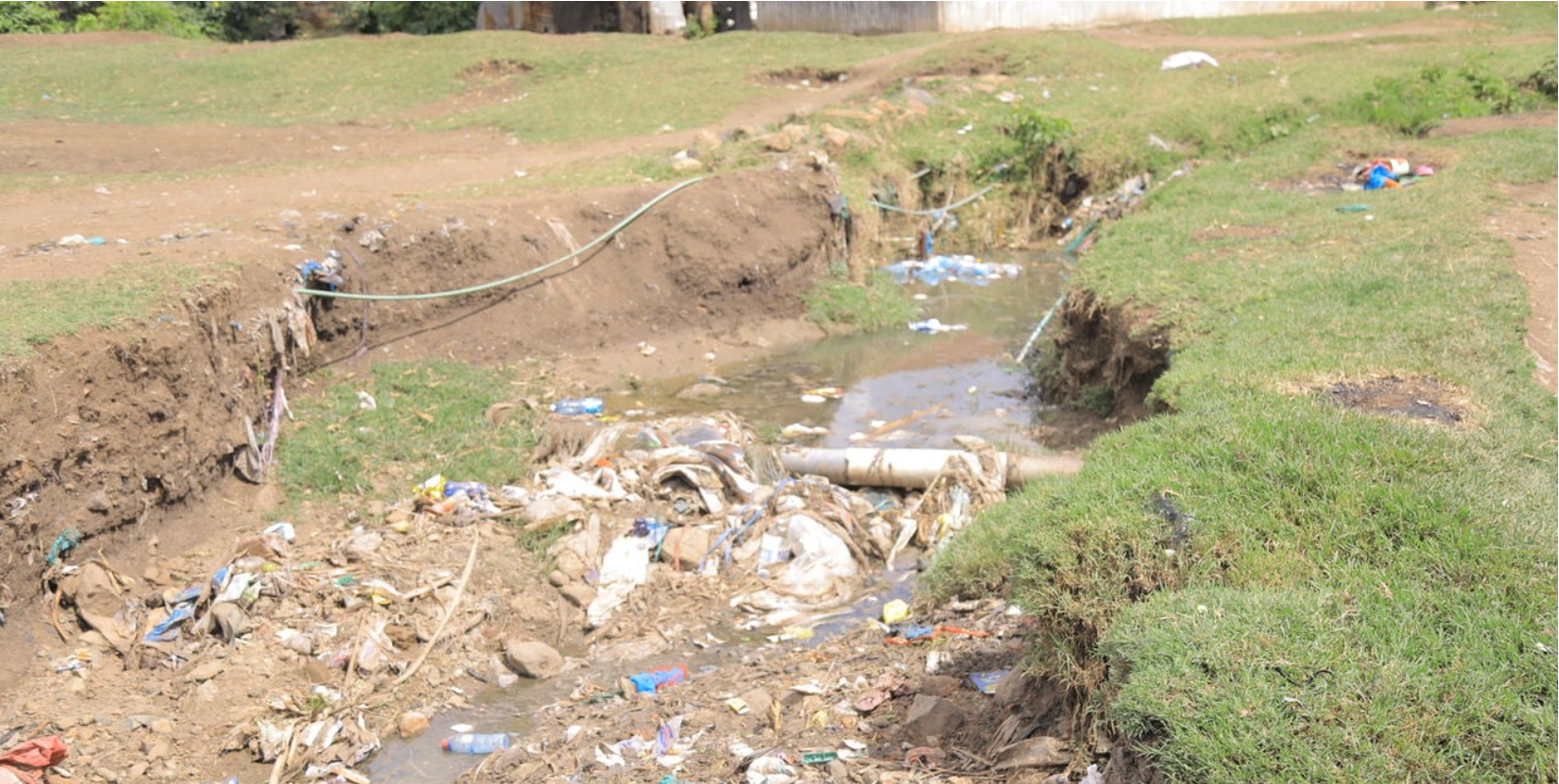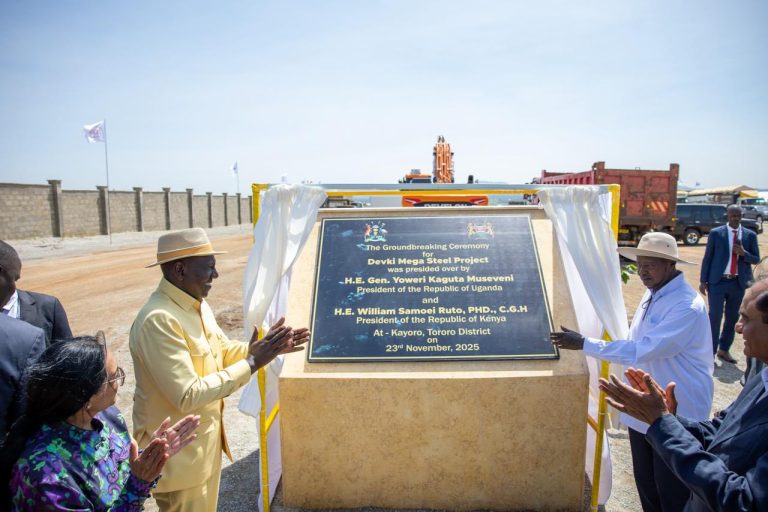
Children chase each other in a game of tag, their laughter cutting through the air in a dusty alley of Homa Bay’s Shauri Yako settlement. Just feet away, a dark, foul-smelling stream of raw sewage flows from a broken pipe, snaking through the dirt. Unaware of the danger, the children dart perilously close to the waste, their bare feet skipping over the contaminated ground.
This scene is a daily reality in Homa Bay’s informal settlements, where residents face a severe public health crisis caused by raw sewage flowing freely through open drains in residential and business areas. The persistent problem, often left unresolved for months, is a source of diseases like malaria, skin infections, and stomach illnesses, with children being the most vulnerable.
In overcrowded areas like Shauri Yako, Makongeni, Sophia, and Got Rabuor, population density exacerbates the sanitation breakdown. Stagnant sewage provides breeding grounds for malaria-carrying mosquitoes, while children playing near the effluent are exposed to dangerous pathogens.
Pamela Aoko, who has lived in Shauri Yako for seven years, shared how her children frequently fall ill, noting that toys that fall into the sewage often end up in children’s mouths.
Her younger child, in Grade Two, frequently suffers from stomach ailments. “When children play, their toys fall into the sewage. They sometimes put them in their mouths, which leads to stomachaches,” Aoko said.
The situation worsens when it rains as floodwaters mix with human waste, forcing residents to navigate the contaminated flow. “Wading through this water causes skin irritation. Walking is difficult as you jump from stone to stone to avoid it,” she added, noting that the open sewage in her area has not been repaired for many months.
Homa Bay Water and Sanitation Company (Homawasco), the agency responsible for managing sewage in the region, acknowledged the problem but placed blame on landlords. Managing Director Tom Nyonje accused some property owners of directing waste pipes onto public roads instead of connecting to the main sewer lines. “Some of the broken pipes that spill sewage are not managed by the company. They’re just discharging waste from residential areas,” Mr Nyonje said.
He noted that normally, pipes from homes connect to a main system that directs the waste to a treatment plant before it’s released into Lake Victoria. But in some parts of Homa Bay, these pipes are not connected.
Mr Nyonje explained that the county government has the proper infrastructure to manage waste, but some residents take shortcuts to avoid paying Homawasco for its services.
“A one-time payment is required to connect household pipes to the main sewage lines,” he said. “Some homeowners don’t want to spend the money and instead opt for shortcuts, which create an unsanitary environment.” He added that some landlords go for cheaper, illegal shortcuts like inadequate septic tanks, which fill up quickly, causing sewage spills.
According to Mr Nyonje, the septic tanks fill up easily in densely populated areas because of the large amount of wastewater from households. “After bathing or washing clothes and utensils, all the water is drained into the underground tanks, which also hold toilet waste,” he said. “Within a few months, some of them fill up and their manholes burst.”
County officials report that up to 75 per cent of the water supplied to residents is discarded as wastewater.
In Shauri Yako, the company announced it supplies at least 2,000 cubic metres (two million litres) of water daily. Mr Nyonje said the area suffers from poor sewage management because the water, after use, is improperly discarded.
“One family may consider their action small, but when multiple families do the same, the overall effect has a great impact on the local environment,” he said.
Lake Victoria
Most of the sewage that does not go through pipes ends up in Lake Victoria. In Homa Bay Town, for instance, sewage from smaller streams collects near the pier before flowing into the lake.
Mr Nyonje said action should be taken against landlords who allow waste to flow into open drainage systems. He added that his office needs support from the Department of Public Health and the National Environment Management Authority to manage the sewage problem.
Homa Bay County Public Health Officer James Kabaka said his office has sued some homeowners for illegal waste discharge. However, he also called on Homawasco to maintain its infrastructure, stating that “some of the pipes the company uses are old and worn out. They burst easily, leading to sewage spillage.”
He noted that in areas where the problem persists, residents are given notices to repair broken pipes or face charges.



